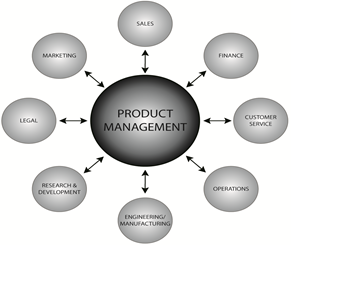by Greg Geracie
Ask virtually any person inside your organization what the value of product management is and you’re likely to get a series of different answers or even quizzical looks. This is ironic, because product management is critical to company success. Although no one inside theorganization wants to eliminate product management, few people can succinctly describe its value to the organization.
This begs the question, why is it so difficult for people to understand and communicate product management’s value?
The main contributor to this confusion can be traced to the lack of a body of knowledge to lay the cornerstone of the profession. Without industry-wide clarity on the profession’s core language, process groups, and knowledge areas, it’s easy to understand why product managers and extended team members struggle to describe product management’score value proposition.
Another part of the problem is the way the product management profession chooses to illustrate the value of the function. The traditional — and commonly accepted — view of product management typically places the product management function at the center of a daisy wheel, the hub. Radiating from the hub is a series of circles. Each circle represents a different function — sales, marketing, and operations to name few. The product management hub is connected to the spokes by a series of double-sided arrows. These arrows represent two-way communication between product management and the other company functions.
 The hub and spoke model highlights two distinct but interconnected aspects of product management. The first is product management’s primary function to ensure appropriate levels of communication between the various functional spokes, illustrated by the arrows in the diagram. The second aspect highlighted by this model is product management’s active work coordinating all of a company’s various functions in pursuit of their product objectives. This is illustrated by the neat arrangement of the surrounding circles.
The hub and spoke model highlights two distinct but interconnected aspects of product management. The first is product management’s primary function to ensure appropriate levels of communication between the various functional spokes, illustrated by the arrows in the diagram. The second aspect highlighted by this model is product management’s active work coordinating all of a company’s various functions in pursuit of their product objectives. This is illustrated by the neat arrangement of the surrounding circles.
The implied value proposition of this model is its emphasis on product management’s role in ensuring functional alignment and effective communication in pursuit of a company’s product goals. No one would argue that functional alignment and coordinated communication is important to the success of a product management organization, but this model only marginally touches on product management’s true value to the organization.
The true value of product management — and what makes it so critical to company success — is the function’s unique focus on creating and sustaining value throughout the entire product life cycle. This role in the organization clearly differentiates product management from all other functions. For instance, project managers focus on successfully managing projects to completion across one or more stages of a product’s evolution throughout the life cycle. Business analysts are actively engaged in the upfront analysis of business problems, requirements gathering, and documentation. Only the product management organization is responsible for optimizing product performance throughout the entire life cycle of a product — from conception to retirement.
Perhaps a better way to think about product management and its critical role in ensuring organizational success is to envision three pillars. These three pillars make up the entirety of the organization. The first pillar is Operations. The operational pillar encompasses the executive leadership team, shared services such as finance and human resources, and the remaining staff who spend most their time ensuring that the organization runs smoothly. This operational group generally makes up the smallest percentage of the organization’s total head count.
The second pillar is the Value Creation Team. This pillar includes all the individuals in the organization who contribute to creating and sustaining value. This is achieved by producing new products, enhancing existing ones, or simply supporting the value that has already been created.
Depending on the size of the organization, a value creation team will be led by one or more product managers that are held accountable for achieving the company’s product objectives. Although product managers are responsible for achievingresults, no product manager can do it alone. Effective product managers work closely with cross-functional product team members from across theorganization. These include project managers, business analysts, engineers, quality assurance staff, research and development personnel, and customer support workers. The Value Creation Team pillar usually makes up the largest percentage of employees on a head-count basis.
The third pillar is the Revenue Capture Team. This team includes most of the marketing organization that supports the activities of the sales organization. These activities include lead generation, collateral development, and outbound marketing programs. The Revenue Capture Team also includes the entire the sales organization, whose mission is to contractually capture the revenue that results from the value of the products.
When viewed from the perspective of the three pillars, product management’s value becomes clear. The product management organization acts as the focal point for value creating and sustaining activities.
Communication and alignment are important to product management’s success, but they’re secondary to product management’s real mission — creating and sustaining value throughout the entire product life
cycle. This role fully differentiates product management from all the other business functions and demonstrates why product management is so critical to company success.
Greg is the President of Actuation Consulting, a world-class provider of product management training courses and advisory services to some of the nation’s most well-known organizations. He is also the author of the global best seller Take Charge Product Management and the Editor-in-Chief of The Guide to the Product Management and Marketing Body of Knowledge.